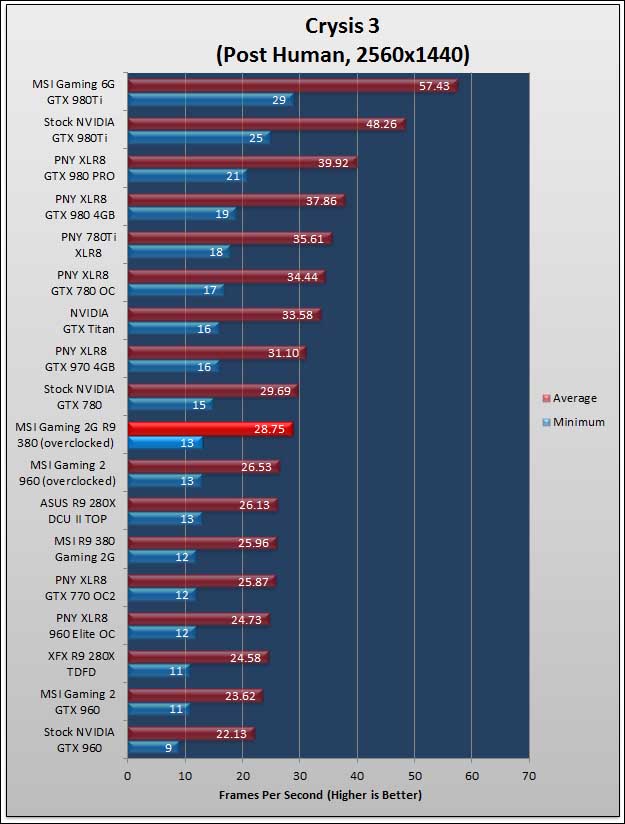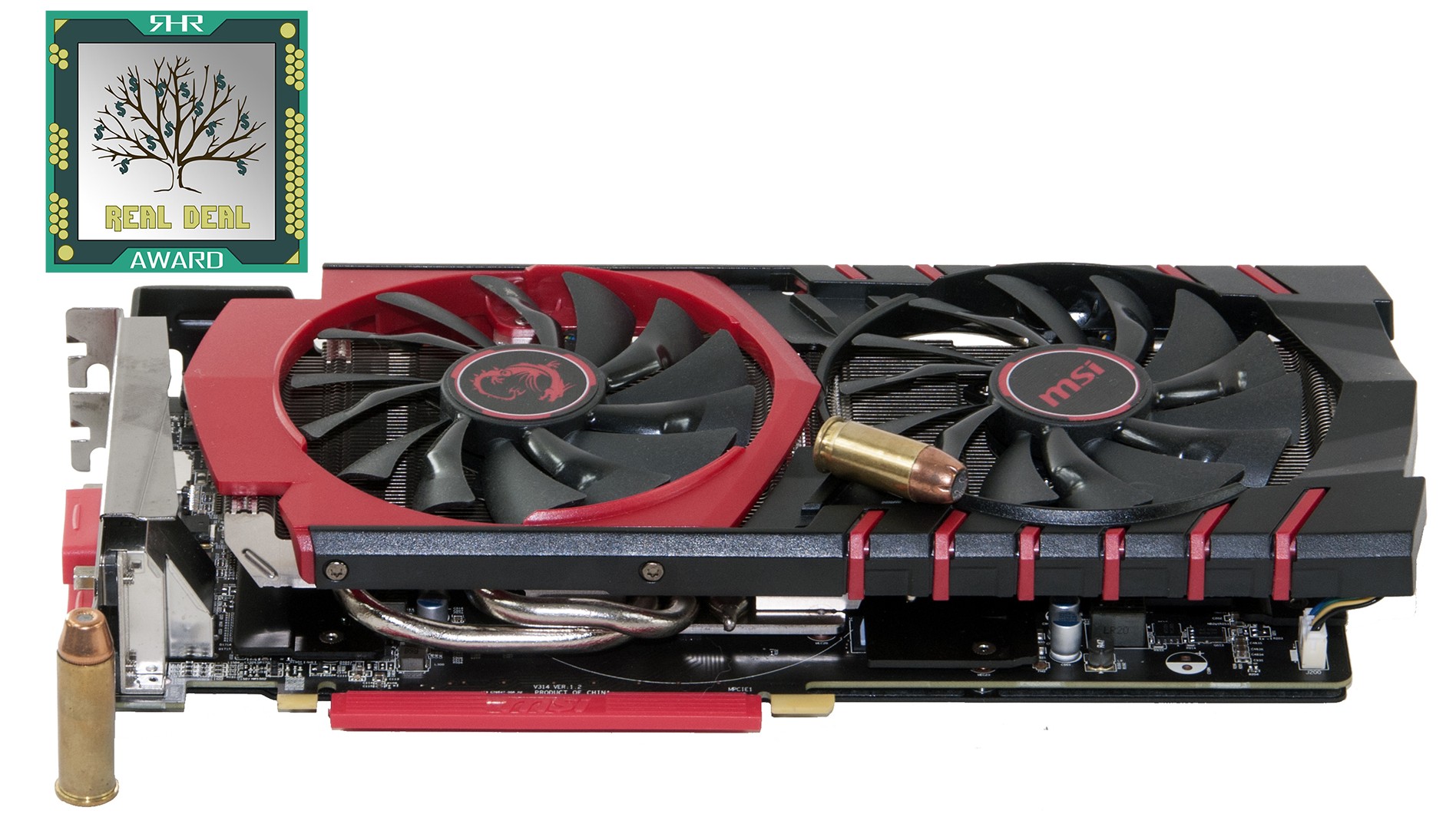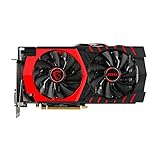Video Card Temperature Results
For all temperature testing the cards were used in an open test bed environment. Ambient temperature was kept at a constant 20°C (+/- 0.5°C) and if the ambient room temperatures rose above 21°C or dropped below 19°C at any time, all benchmarking was stopped until proper temperatures could normalized.
For Idle tests, we let the system idle at the Windows 7 desktop for 25 minutes and recorded the peak temperature.
For Load tests, we ran Unigine’s Valley benchmark for 20 minutes. Since the fans are not spinning the idle temperatures are going to be higher than on typical solutions. In other words There Is No Such Thing As A Free Lunch is in full effect. Since those temperatures are still more than reasonable, having the idling core running a little hotter than normal is more than worth ZERO noise emissions. As for the working temperatures, they are also right in the ballpark we would want to see them and downright good considering it is a factory overclocked card on an already overclocked core by AMD.
Since the fans are not spinning the idle temperatures are going to be higher than on typical solutions. In other words There Is No Such Thing As A Free Lunch is in full effect. Since those temperatures are still more than reasonable, having the idling core running a little hotter than normal is more than worth ZERO noise emissions. As for the working temperatures, they are also right in the ballpark we would want to see them and downright good considering it is a factory overclocked card on an already overclocked core by AMD.
Sound Level Test Results
While everyone “hears” noise differently there is one easy way to remove all subjectivness and easily compare different fans: use a sound level meter. This way you can easily compare the various fans noise envelopes without us coloring the results and see what fans fit within your personal comfort level. Of course, we will endeavor to try and explain the various results – which are taken at a 15 inch distance from the GPU’s fan(s) – to help you gain an even better understanding of how loud a cooler’s stock fan is, but even if you discount our personal opinions, the fact remains numbers don’t lie.
For Idle tests, we let the system idle at the Windows 7 desktop for 25 minutes and recorded the peak dB.
For Load tests, we ran Unigine’s Valley benchmark for 20 minutes and recorded the peak dB. As expected this card is literally silent at idle and pretty low noise when under load. In other words MSI Twin Frozr V proves to be once again a very good solution for keeping the video card and customers happy.
As expected this card is literally silent at idle and pretty low noise when under load. In other words MSI Twin Frozr V proves to be once again a very good solution for keeping the video card and customers happy.
System Power Consumption
To obtain accurate results we have connected the system to a Power Angle power meter that has in turn been attached to a 1500watt UPS. This ensures only 120volt power is supplied to the PSU and removes an variances that could potential crop up because of brownouts and power spikes.
In order to stress the video card we have once again used Unigine’s Valley benchmark and ran it for 20 minutes to determine peak system power consumption. For idle results we have let the system idle at the Windows 7 desktop for 25 minutes and recorded the peak idle power consumption. There are two ways of looking at these numbers. On the one hand the R9 380 does use noticeably more power than either a GTX 960 or a R7 370. On the other 60 – 80 watts of extra power really does not mean a whole hell of lot in the real world. Unless you are a professional gamer a video card is going to sit idle for a good portion of its life. Here the difference is a couple watts. More importantly at an average cost of 12 cents per KW/h, and average of four hours of gaming every day, this difference works out to be about $14.37 a year in extra power. Put another way this card will add about $1.19 to your monthly power bill…if you game for four hours a day…every day. That is not worth caring about, and if you do care…buy three less Starbucks coffees a year to make up the difference.
There are two ways of looking at these numbers. On the one hand the R9 380 does use noticeably more power than either a GTX 960 or a R7 370. On the other 60 – 80 watts of extra power really does not mean a whole hell of lot in the real world. Unless you are a professional gamer a video card is going to sit idle for a good portion of its life. Here the difference is a couple watts. More importantly at an average cost of 12 cents per KW/h, and average of four hours of gaming every day, this difference works out to be about $14.37 a year in extra power. Put another way this card will add about $1.19 to your monthly power bill…if you game for four hours a day…every day. That is not worth caring about, and if you do care…buy three less Starbucks coffees a year to make up the difference.
Overclocking
Because the core architecture that the R9 380 Gaming 2G relies upon is not as ‘old’ as the what powers the R7 370 Gaming 2G consumers interested in overclocking will find a bit more gas in the tank; however, anyone expecting to see massive improvements will be disappointed. Basically, since MSI factory overclocks a core that is arguably already overclocked by AMD the amount of head room will vary from core to core, but most fall in the 100 – 150Mhz range. That works out to 10-15% which is not bad, but certainly does not fall into the category of ‘massive gains’ either. Our particular sample ran out of gas at 1100MHz range (or ten percent) and while we consider this to be on the low end of expectations it really is a lottery on what your sample will do. If you are really lucky and get a ‘golden’ chip you may even be able to do 1175 but don’t go into the overclocking session expecting to see it. Since we knew all this going into the overclocking section we were pleased with a 100Mhz overclock, as that is still an extra 130Mhz over what a reference R9 380 can do…and a full 182Mhz over a R7 285 clocks in at.
 Instead of expecting monster gains on the core we were expecting to see the most improvements on the RAM side of the overclocking equation and we were not disappointed. Put simple we did see massive gains and managed to do much, much better than expected. Usually with 5,500 GDDR5 RAM you can expect to push things to 5,900 – 6,100 (effective) range….usually. However some batches will not do any better than a 5.6GHz and even in great batches there is always a few that will only do 5,600Mhz. Since MSI has to warranty all their R9 380 Gaming 2G’s to run at ‘factory’ settings they took the extremely conservative route and set all to 5,600MHz. This is a decent compromise as binning chips to find the weak links does cost time, effort, and money – all of which would have pushed the MSRP of this card up.
Instead of expecting monster gains on the core we were expecting to see the most improvements on the RAM side of the overclocking equation and we were not disappointed. Put simple we did see massive gains and managed to do much, much better than expected. Usually with 5,500 GDDR5 RAM you can expect to push things to 5,900 – 6,100 (effective) range….usually. However some batches will not do any better than a 5.6GHz and even in great batches there is always a few that will only do 5,600Mhz. Since MSI has to warranty all their R9 380 Gaming 2G’s to run at ‘factory’ settings they took the extremely conservative route and set all to 5,600MHz. This is a decent compromise as binning chips to find the weak links does cost time, effort, and money – all of which would have pushed the MSRP of this card up.
 Put another way MSI gives you the fun of finding out what exactly the chips on your R9 380 Gaming 2G can do, while still giving you the fall back overclock that is 100% guaranteed. In our case the Core might not have been anywhere near golden, but the chips certainly came awfully close as we were able to push to 6200. This increased the memory bandwidth from 179.2GB/s to a whopping 198.4GB/s! Of course such gains will only help in memory intensive games, and any game that is core bottlenecked…the boost will be minor. It still was nice to see, and since our overclock of 1100 on the core and 6,200 on the ram was long term stable, proves that the extra heatsink, better power delivery system and most likely better RAM does make the extra cost of opting for a R9 380 Gaming 2G over a R7 370 card.
Put another way MSI gives you the fun of finding out what exactly the chips on your R9 380 Gaming 2G can do, while still giving you the fall back overclock that is 100% guaranteed. In our case the Core might not have been anywhere near golden, but the chips certainly came awfully close as we were able to push to 6200. This increased the memory bandwidth from 179.2GB/s to a whopping 198.4GB/s! Of course such gains will only help in memory intensive games, and any game that is core bottlenecked…the boost will be minor. It still was nice to see, and since our overclock of 1100 on the core and 6,200 on the ram was long term stable, proves that the extra heatsink, better power delivery system and most likely better RAM does make the extra cost of opting for a R9 380 Gaming 2G over a R7 370 card.












